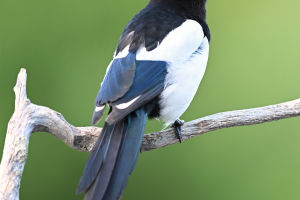The African savannah, with its vast stretches of grassland and scattered acacia trees, is home to one of the most iconic and majestic creatures on the planet: the lion.
Among these magnificent big cats, there are notable differences between a wandering male lion, often seen alone or in small groups, and a lion king, who rules over a pride.
Understanding these differences provides insight into the complex social structures and behaviors that define these apex predators.
The Wandering Male Lion: Nomads of the Savannah
Wandering male lions, also known as nomadic males, are typically seen roaming the savannah either alone or in coalition with one or two other males. These lions are often younger males who have recently left their natal pride or older males who have been displaced by stronger rivals. The life of a wandering male lion is fraught with challenges and dangers, as they navigate the harsh realities of survival without the support of a pride.
Physical Characteristics:
Wandering male lions tend to be leaner and often show signs of battle, such as scars and tattered ears, due to frequent conflicts with other lions. Their manes might be less full compared to pride leaders, as they are still maturing or have faced significant stress.
Behavioral Traits:
Nomadic males are more solitary and cautious, spending much of their time on the move in search of food and territory. They often travel at night to avoid detection and minimize conflicts. These lions rely on their hunting skills and scavenging opportunities, as they do not have the advantage of group hunting provided by a pride.
Social Structure:
The social structure of wandering males is fluid. They may form temporary alliances with other males, called coalitions, to increase their chances of survival and eventually take over a pride. These coalitions can be highly strategic, as members work together to overthrow resident males and gain control of a pride and its females.
The Lion King: Ruler of the Pride
In stark contrast, the lion king is the dominant male who presides over a pride. A pride typically consists of several related females and their offspring, along with one or more dominant males. The lion king’s life is characterized by authority, protection, and the constant need to defend his status.
Physical Characteristics:
The lion king is often more robust and muscular compared to wandering males. His mane is usually fuller and darker, which is a sign of maturity and good health. A dark mane is also considered attractive to lionesses, as it indicates a strong genetic lineage.
Behavioral Traits:
Pride leaders exhibit confident and dominant behavior. They patrol their territory, scent-marking boundaries to ward off intruders. These males are more likely to be seen resting and socializing within the pride, as their primary role is protection rather than hunting. However, they do participate in hunts when large prey is targeted.
Social Structure:
The social structure of a pride is more stable and hierarchical. The lion king maintains order and ensures the safety of the pride’s members. He fiercely defends his territory and cubs against rival males and other threats. This protective behavior ensures the survival of his genes, as he fathers most of the cubs in the pride.
Key Differences and Observations
Territorial Range:
Wandering males cover vast distances in search of a territory to claim, while the lion king’s range is more defined and heavily patrolled. Nomadic lions are often found in the peripheries of established territories, avoiding direct confrontations unless they are attempting a takeover.
Interaction with Females:
The lion king enjoys the company of multiple lionesses and cubs, engaging in social grooming and playing a central role in the pride’s dynamics. In contrast, wandering males have limited interaction with females, except during attempts to take over a pride or during rare encounters.
Risk and Mortality:
Wandering males face higher mortality rates due to constant threats from rival males, starvation, and injuries. Their transient lifestyle exposes them to greater dangers. Conversely, the lion king, while still facing challenges, benefits from the collective defense and support of the pride.
The differences between a wandering male lion and a lion king are profound and reflect the diverse strategies these animals employ to survive and thrive in the wild. While the wandering male lion epitomizes the struggle and resilience needed to eventually claim a territory, the lion king represents strength, stability, and the intricate social bonds that define lion prides. Understanding these differences not only enriches our appreciation for these majestic creatures but also highlights the complex interplay of power and survival in the animal kingdom.


